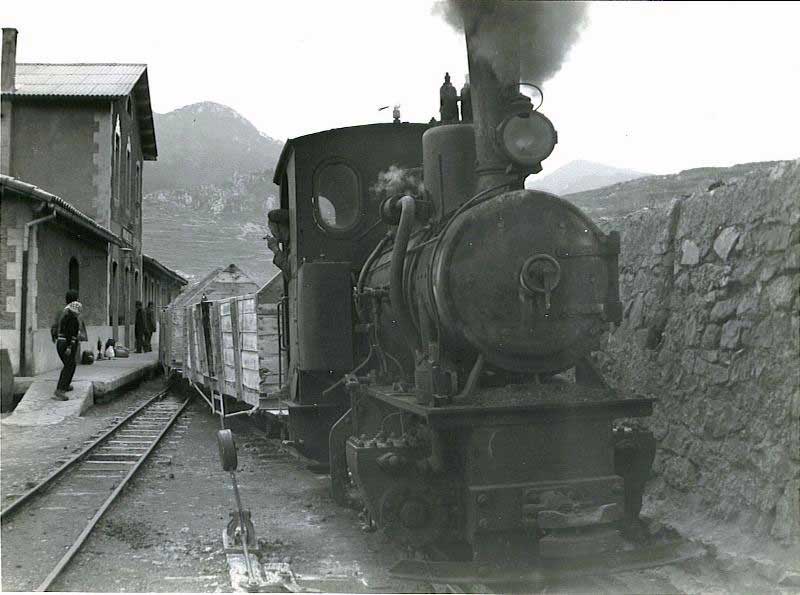Photo de Josep Bancells
The narrow gauge Railroad that linked Guardiola de Berguedà with Castellar de n'Huc was opened and operated as line of goods and passengers until its closure in September 1963 as a secondary railway. Its construction is intimately linked to the efforts that made the cement Asland by transporting your product from the factory of the Clot del Moro to Guardiola, where he hoped to metric-gauge train.
To be a secondary railway the path that was used had a width of 600 mm, width he shared with many industrial railways, and its future was like all the Spanish trains quite placid before the civil war, after she had to be reconstructed and subsequently in the post-war period spent many hardships to live with insecurity that abounded in the lack of materials. In the 1950s the train met a time of relative calm that ended when the road boom was taking center stage and making decaying train to minimum of transport they did that already in 1961 were asked its closure which was formalized two years later.
In that final stretch, some English fans that sensed that could disappear soon steam traction began a tour of all Spain photographing the "modus vivendi" of the lines of the time, and therefore they could attest to its useful life. On this page will be those relating to the "train of la Pobla", but I recommend to visit the Group 30937 for power web enjoy with other railway companies already closed. Therefore one can say that the legacy of these photographers is a good historical memory.
In 1988 the private foundation of the Museum of transport, who directed Salmerón Carles came to many commitments and soon they had material to preserve in what was to be their final location at the foot of the Clot del Moro Asland factory. CEFIS (industrial and secondary railways Studies Center) was created, but things were not going well because there were too many interests competing between councils, institutions and individuals. Meanwhile, over the years material that has patiently awaited its restoration in the solitude of the cement factory was deteriorating by the relentless work of the time.
In 2005 the Government was created the Ciment Train or the Turistic Railroad of Alt Llobregat, which depends on the railways of the Generalitat of Catalonia as a tourist train, in turn began in the lower part of the route of the tourist train construction of what will be the permanent exhibition of the industrial railway, thus bridging disputes that have wasted part of the preserved historical material of Catalonia.
